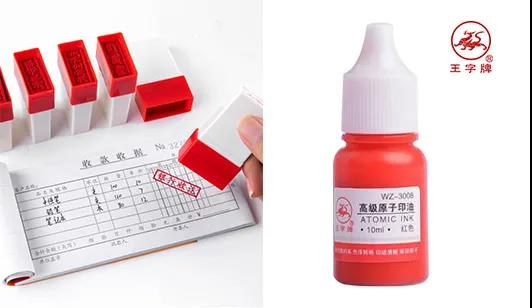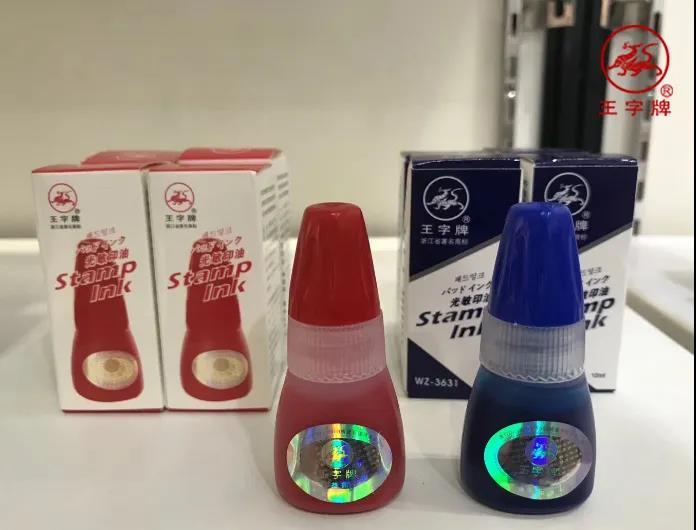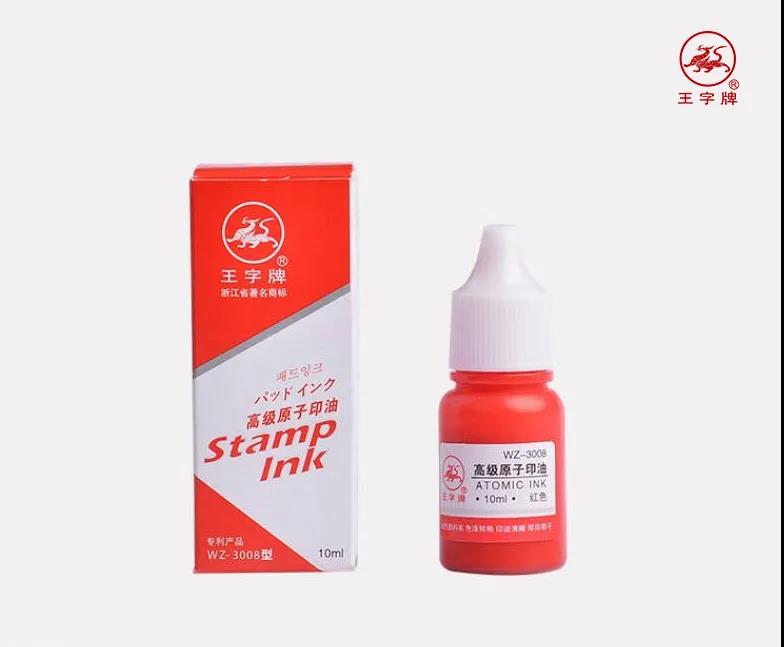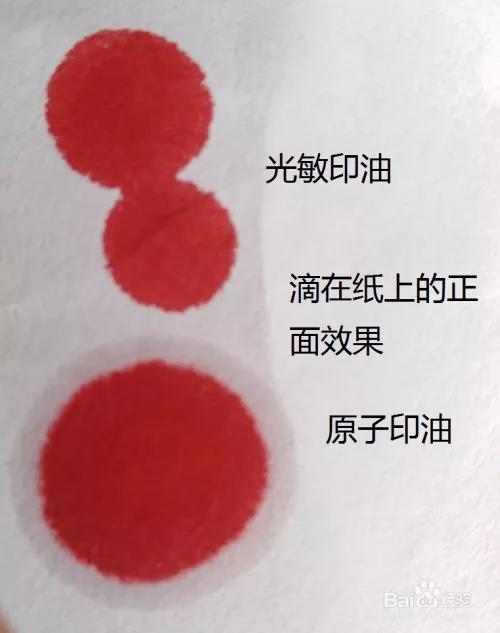Many people are somewhat unfamiliar with the types of printing oil, which is mainly used as an additive in seals. When stamping in a company, the use of the seal varies, and the required ink is also different. A good ink can make the seal last longer.
Generally speaking, there are two types of ink for seals, namely photosensitive ink and atomic ink. There are significant differences between the two in terms of seal selection, material composition, or product characteristics.
Next, let me introduce it to you!

Seal selection
Photosensitive ink and atomic ink are also vastly different in the selection of seals.
Photosensitive printing oil is mainly suitable for use on photosensitive seals, where the seal surface is black and flat.
As the latest type of seal in the international market, compared with traditional seals, the biggest feature is that in addition to Chinese and English characters, complex patterns, portraits, and even photos can be directly made into seals, and the seal surface is clear, delicate, and visible, with strong applicability and long service life.

Atomic imprinting oil is mainly used on atomic seals, with a red surface and a concave convex impression.
The difference between an atomic seal and a regular seal is that its ink can be repeatedly used multiple times with a single injection, ensuring clear handwriting, uniform and bright ink, strong anti-counterfeiting, and difficult to make for ordinary tools. However, the atomic seal can deform over time, making it difficult for banks to verify the authenticity of bills.

Material composition
Photosensitive ink and atomic ink have differences in material composition.
The composition of photosensitive printing oil belongs to water-based printing oil, which is a liquid composed of pigments, dyes, and binders mixed with water and a small amount of alcohol.
It is a solvent processed by combining photosensitive polymers in the light processing process, and the formula is commonly known as photoresist or photoresist.

The components of atomic printing oil belong to oil-based printing oil, which is a mixture of pigments and oily solvents.
It is an organic solvent formula that is different from ordinary materials and uses pigments, resin components, and organic chemical solvents to supplement the printing oil used for atomic seal sealing.

Product characteristics
Photosensitive printing ink is not easy to settle, easy to use, has bright colors, and high color density. When it drips on the seal, it is clear and uniform, does not sink into the paper, has a fast penetration speed, is dry immediately after printing, is resistant to high and low temperatures, has strong stability, is environmentally friendly and non-toxic, does not have adverse reactions with the seal pad and seal shell, and can be repeatedly oiled.
Atomic imprinting oil has excellent permeability, non paper, water resistant, sun resistant, acid and alkali resistant, stable storage, bright color, and clear imprints. It is suitable for oily atomic imprinting seals and can be added to the atomic imprinting platform.

Applicable occasions
Photosensitive printing oil is used to stamp on paper.
Atomic imprinting oil is mainly used to supplement the sealing of atomic seals and is not edible, let alone printed on food.
Diffusion shape
We dropped photosensitive ink and atomic oil onto paper separately and found that there is a significant difference in the diffusion shape between photosensitive ink and atomic oil. Photosensitive ink only forms a circular shape on paper, while atomic ink exudes a diffuse circle of oil spots outside, which is different from the natural color

This can indicate that the two cannot be mixed, and using this difference can easily complete the identification and recognition of photosensitive and atomic imprints.
Refueling method
Photosensitive printing oil and atomic printing oil have the same oiling method. Place the seal facing upwards and add 5-6 drops of printing oil to evenly cover the printing area. Wait for 30 minutes and wipe off any excess printing oil before use.
Due to the different composition of photosensitive and atomic printing oils, mixing them may cause unclear printing and even block the seal, resulting in the seal being scrapped.
So when we use ink, we must choose the corresponding seal.
Zhejiang Keli Printing Industry New Technology Development Co., Ltd
Zhejiang Keli Printing Industry New Technology Development Co., Ltd. is a national civilized unit, a national high-tech enterprise, a vice president unit of the China Seal Industry Association, and an executive director unit of the China Cultural, Educational, and Sports Goods Association. It is an export-oriented enterprise specializing in the production and sales of China's well-known trademark "Wangzipai" international seal products. The company's mission is to inherit seal culture, focus on seal development, and innovate seal technology; Adhere to the core values of "employee satisfaction, customer satisfaction, social satisfaction, reflecting value through quality, and creating value through joint efforts". The spirit of craftsmanship is the most beautiful spirit in today's society. Keli Printing Industry also upholds this spirit to work seriously, carefully, and diligently, treating our employees, customers, and society to achieve the most satisfactory results.

Keli Production Workshop
We specialize in producing a series of products such as the well-known Chinese trademark "Wang Zi Pai" seals, printing pads, ink, gift seals, toy seals, etc.

